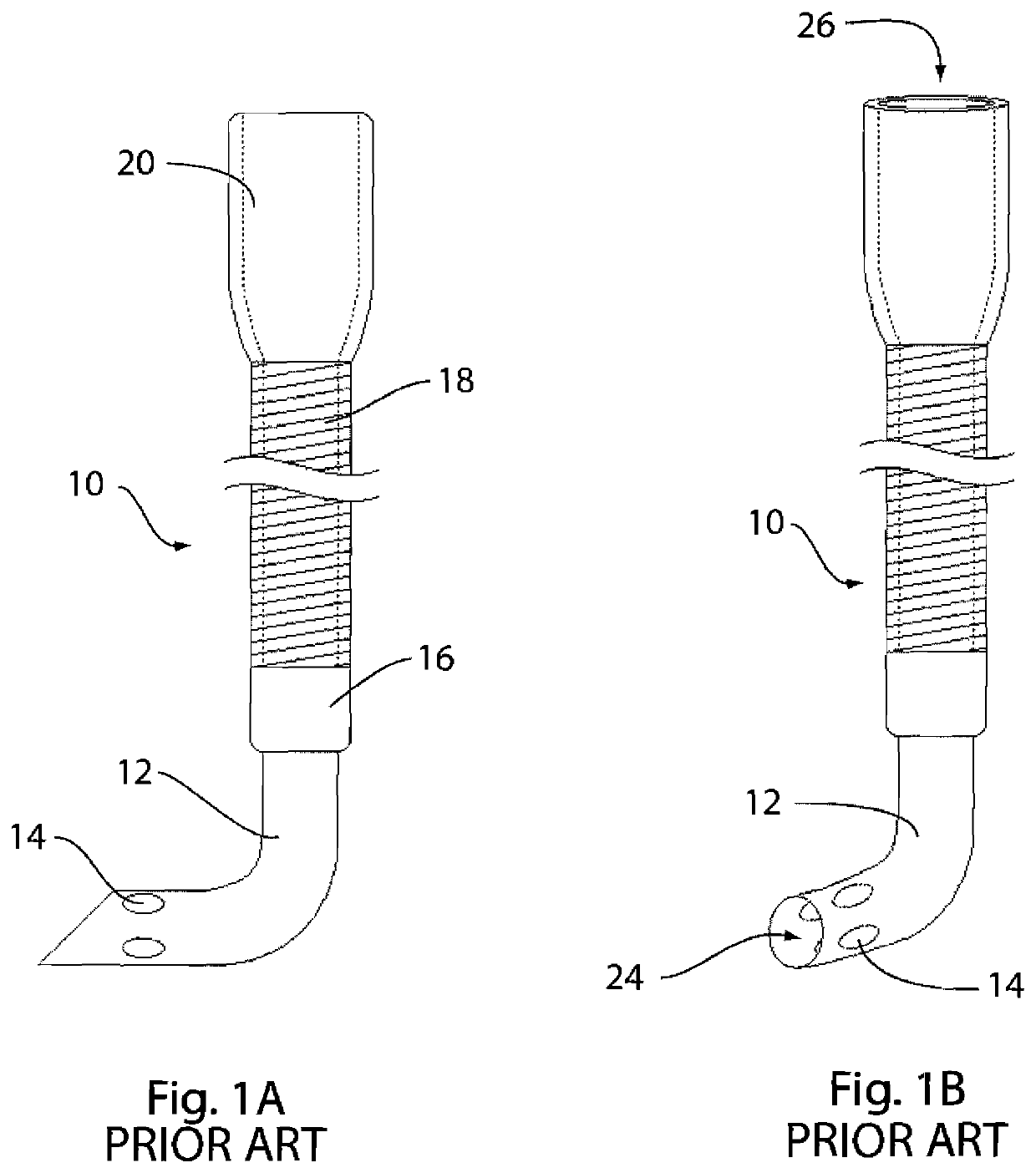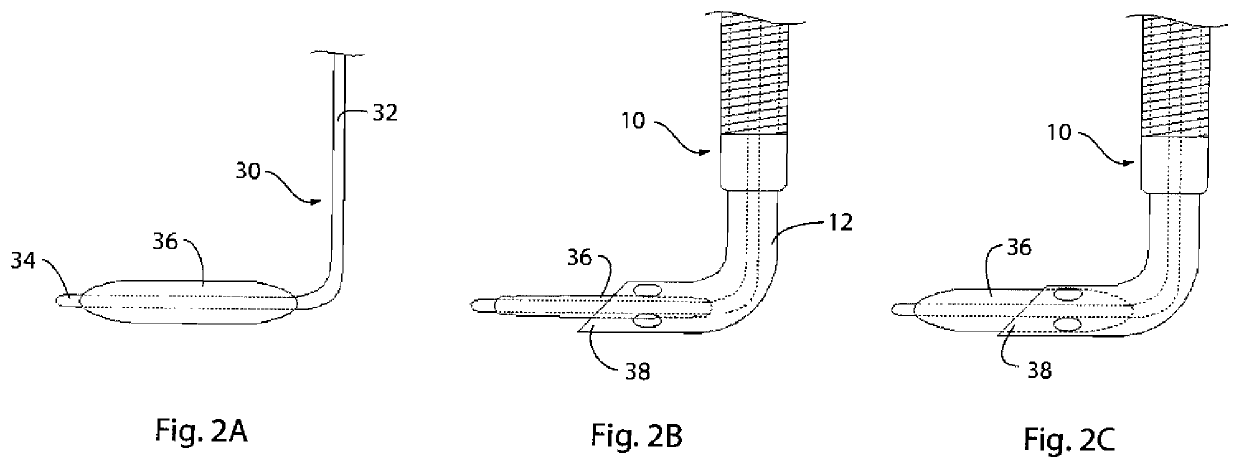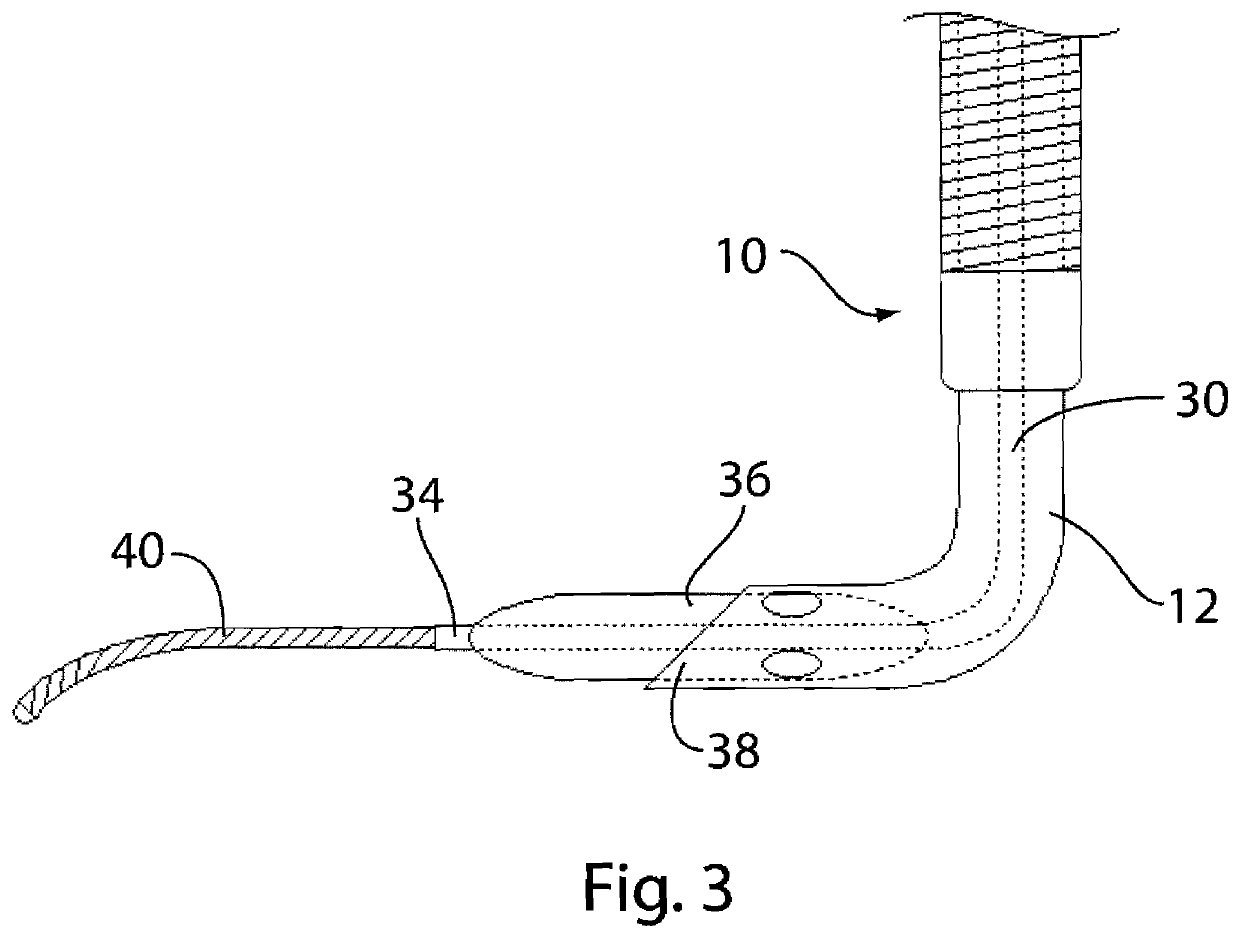Balloon dilator
a balloon dilator and balloon technology, applied in the field of balloon dilators, can solve the problems of multiple attempts and significant blood loss, difficulty in removing balloon dilators, and hemodynamic instability of patients, and achieve the effects of increasing the rigidity of the combined balloon dilator, quick removal, and improving the ease of insertion
- Summary
- Abstract
- Description
- Claims
- Application Information
AI Technical Summary
Benefits of technology
Problems solved by technology
Method used
Image
Examples
Embodiment Construction
[0030]The present invention overcomes many of the prior art challenges associated with dilators for arterial and venous cannulas. The advantages and other features of the technology disclosed herein will become more readily apparent to those having ordinarily skill in the art, and the following detailed description of certain embodiments taken into conjunction with the drawing which set forth representative embodiments of the present invention and wherein like reference numerals identify similar structural elements.
[0031]It is to be understood that the subject technology is not intended to be limited to the particular constructs and methods described in the described embodiments, as one skilled in the art can extend the concepts involved using variations which are obvious after reading the present disclosure. Although any methods and materials, similar or equivalent to those described herein, may be useful in a practice of the subject technology, certain compositions, films, methods...
PUM
 Login to View More
Login to View More Abstract
Description
Claims
Application Information
 Login to View More
Login to View More - R&D
- Intellectual Property
- Life Sciences
- Materials
- Tech Scout
- Unparalleled Data Quality
- Higher Quality Content
- 60% Fewer Hallucinations
Browse by: Latest US Patents, China's latest patents, Technical Efficacy Thesaurus, Application Domain, Technology Topic, Popular Technical Reports.
© 2025 PatSnap. All rights reserved.Legal|Privacy policy|Modern Slavery Act Transparency Statement|Sitemap|About US| Contact US: help@patsnap.com



